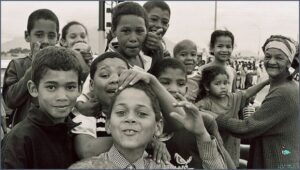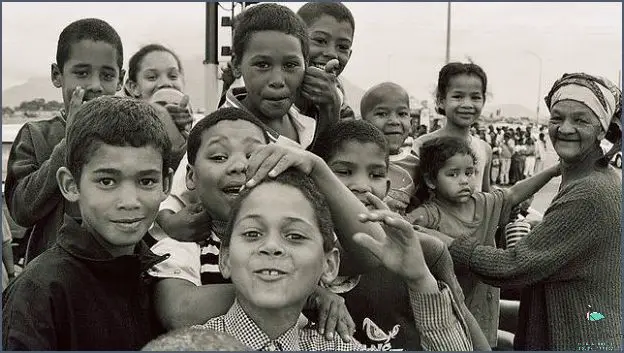
Mixed Race In South Africa
The term "mixed race" refers to people who have a parent of one race and a parent of another race. In South Africa, the term is typically used to refer to people of mixed African and European descent. The term "coloured" is also used to refer to mixed-race people in South Africa, but this term is considered to be outdated and offensive by many.
Mixed-race people in South Africa make up a significant portion of the population, and have a long history in the country. The first mixed-race people in South Africa were the children of European colonists and indigenous Africans. These children were often discriminated against by both Europeans and Africans.
In the late 1800s and early 1900s, the South African government enacted a series of laws that institutionalized discrimination against mixed-race people. These laws, known as the Apartheid laws, segregated mixed-race people into separate and unequal "white" and "non-white" communities.
Mixed-race people were active in the struggle against Apartheid, and played a significant role in the eventual overthrow of the Apartheid regime. In the post-Apartheid era, mixed-race people have
Contents
Mixed Race In South Africa
South Africa has a long and complicated history of race relations, with a long history of segregation and discrimination based on race. In the last few decades, the country has become increasingly diverse, with a growing population of mixed race people. Mixed race people in South Africa have often faced discrimination and prejudice, as they are seen as a bridge between different racial and cultural groups. Despite this, mixed race people in South Africa have made great contributions to the country’s culture, economy, and politics. Mixed race people have also become prominent in the media, with many celebrities, athletes, and other public figures proudly identifying as mixed race. As South Africa continues to become more diverse, mixed race people will continue to play an important role in the country’s future.
Overview of the definition of "Mixed Race"
Mixed Race in South Africa has been a highly contentious and complex subject that has been debated and discussed for many years. Though the country is known for its diversity, the concept of mixed race in South Africa has been largely misunderstood and misrepresented.
In South Africa, mixed race is defined as a person who has a parent of two different racial backgrounds. This can be any combination of white, black, Indian, and Coloured. This definition has been formally accepted since the 2010 South African Census, which counted people based on their self-identified racial identity.
The concept of mixed race in South Africa is often conflated with the term “Coloured”, which refers to a population of people of mixed ancestry. This is an oversimplification, as the term “Coloured” does not encompass the full range of racial identities in the country. In addition to being of mixed race, people of Coloured identity may also be of one race.
Mixed race people in South Africa are often marginalised and excluded from society. This is due to a lack of recognition and acceptance of their identity, as well as a lack of resources and opportunities. Despite this, there is a growing movement of mixed race people in South Africa who are advocating for greater rights and recognition.
Mixed race in South Africa is an incredibly complex and dynamic subject. Despite its complexities, it is important to recognise the contributions of mixed race people to the country’s history and culture. In doing so, we can contribute to creating a more inclusive society in which people of all racial backgrounds can thrive and be accepted.
Impact of Apartheid on Mixed Race people in South Africa

The impact of apartheid on South Africa’s mixed-race population has been profound and far-reaching. Though the system of racial segregation was officially dismantled in the early 1990s, the legacy of apartheid continues to shape the lives of South Africans of mixed heritage today.
Mixed-race South Africans, or “Coloureds”, as they were known under apartheid, were often the most affected by the system. From 1948, when apartheid was officially implemented, until the early 1990s, Coloureds were subject to an array of discriminatory policies and practices. These included restricted access to education, employment, and housing, as well as the implementation of a “pass system” which limited their movement and freedom of association.
The effects of apartheid were particularly devastating for Coloureds in terms of their economic opportunities. With fewer educational and employment opportunities, Coloureds were often excluded from better-paying jobs and professions. This meant that they were more likely to be trapped in poverty and were less able to access the resources and services necessary for them to improve their economic situation.
The psychological effects of apartheid were equally damaging. Coloureds were not only denied access to basic rights, but also subjected to a range of humiliations and indignities, including being forced to use separate facilities and prohibited from interracial marriages or sexual relations. This discrimination and segregation often led to feelings of alienation and a sense of powerlessness among Coloureds.
In the years since apartheid was abolished, South Africa has made significant strides in advancing the rights of its mixed-race population. The government has implemented a range of policies, programs, and initiatives aimed at addressing the socio-economic disparities between Coloureds and other racial groups. In addition, the government has taken steps to combat racism and discrimination and promote diversity and social inclusion.
Despite these efforts, however, the impact of apartheid continues to be felt by Coloureds in South Africa today. Many Coloureds still face challenges in terms of access to education, employment, and housing, and disparities in terms of poverty, health, and wealth remain. Moreover, the legacy of apartheid has left its mark on South African society, with Coloureds continuing to face discrimination and prejudice on a daily basis.
In light of this, it is clear that the effects of apartheid on South Africa’s mixed-race population continue to be felt today. Though progress has been made since the end of apartheid, there is still much work to be done in order to ensure that Coloureds have the same rights and opportunities as other South Africans.
Present-day experiences of Mixed Race people in South Africa
Mixed-race people in South Africa often face unique challenges due to their unique heritage. South Africa is a nation of various cultures and ethnicities, and this can often lead to a sense of ambiguity and confusion for those who do not identify as belonging to one group or another. Mixed-race people in South Africa often experience a sense of alienation, marginalization, and prejudice due to their identity.
The term “Coloured” is often used to describe people of mixed-race heritage in South Africa. This term was historically used by the apartheid government to classify people who did not fit into the categories of Black, White, or Indian. This term has become loaded with negative connotations, and it is often used in a derogatory manner to refer to people of mixed race. This sense of marginalization and exclusion is one of the main challenges that mixed-race people in South Africa face.
Mixed-race people in South Africa are often victims of discrimination and prejudice. They are often seen as being “not quite” belonging to any one group or culture, and this can lead to a sense of not being accepted or welcomed by any group. This can be particularly difficult for those who are trying to find their own identity and fit in with their peers.
Mixed-race people in South Africa also often experience difficulty in accessing education and employment opportunities. This is due to the fact that they are seen as not fitting into any one group, and this can lead to them being passed over for opportunities that are available to other groups. This can be a major barrier to achieving success and reaching one’s potential.
Despite these challenges, mixed-race people in South Africa are also enjoying some success. There are a growing number of mixed-race people who are achieving success in various fields, and this is helping to create a more inclusive and accepting society. Mixed-race people are also becoming more visible in South African society and culture, and this is helping to create a more positive image of the mixed-race community.
Overall, mixed-race people in South Africa are facing unique challenges due to their unique heritage. Despite this, they are also finding success and acceptance in South African society, and this is helping to create a more inclusive and accepting nation.
Conclusion
In conclusion, the Mixed Race population in South Africa is a unique and diverse community that has contributed greatly to the nation’s history and culture. Despite the challenges and discrimination faced by the Mixed Race population, they have maintained a strong sense of identity and culture. Mixed Race South Africans have been able to successfully integrate into South African society and have made significant contributions in a variety of fields, from politics to the arts. The Mixed Race population in South Africa continues to face challenges, including racism and inequality, but their resilience and determination is an example for all South Africans to follow.




